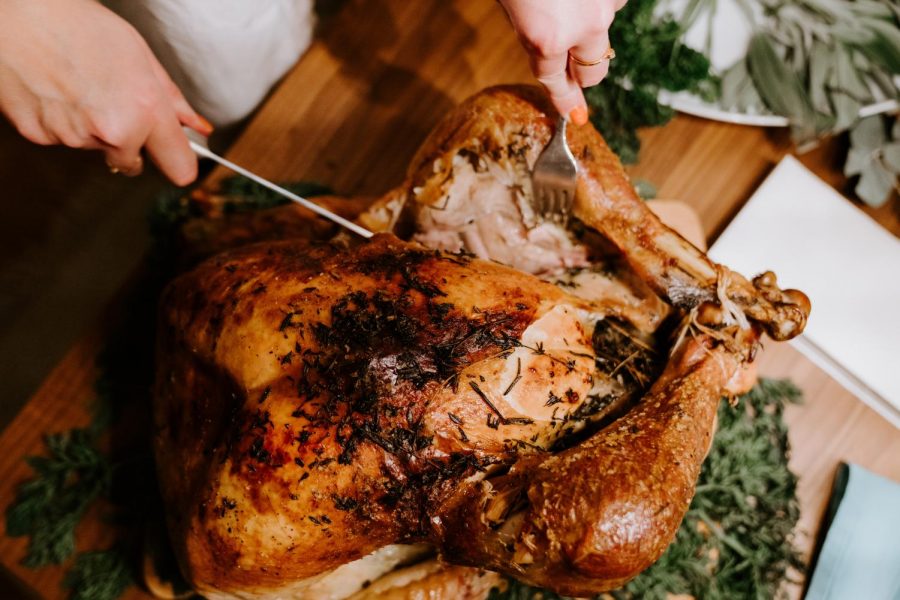The why behind Thanksgiving turkey
November 27, 2021
From New York to California, families all over America sat down together at Thanksgiving on Thursday with turkey on their plates. But, why exactly is it turkey instead of other options? Like chicken? Or ham?
Thanksgiving is a controversial holiday in modern times, with issues largely based on the origins of the holiday and how it came to be. Despite this, the tradition of turkey stands.
But why turkey, of all poultry? Turkey is difficult to make, consisting of both dark and light meat. It takes forever to roast, forcing someone in the family to take up nearly their whole day just tending to the bird. Why do Americans still stand for it?
There have been many attempts to alter the difficult process of turkey preparation. Hacks such as deep frying or spatchcocking the patriotic bird have even been trending; though they haven’t yet to reach the mainstream, instead sticking to their niche sides of the internet and those brave enough to try them. It seems turkey is here to stay, whether one likes it or not.
Turkey was likely served during the first Thanksgiving, but some experts instead believe it was more likely that venison was the main dish. Turkey’s popularity most likely started much later, when Abraham Lincoln declared Thanksgiving a national holiday in 1863.
The animal used to roam wild, which made it plentiful and easy to acquire. Since then, it’s inclusion has been laced in tradition. Now, each year, turkey prices skyrocket around November and every family and their cat is running for the few that are stocked at the local supermarket just for the chance to have a “traditional” Thanksgiving. After all these years and with many cheaper and easier alternatives, what makes turkey so attractive to the Thanksgiving table?
Turkey is a staple of Americana, a style of artwork or object laced in historical appeal that portrays the stereotypical (and to some ideal) depictions of America. Some examples of Americana would be apple pie, baseball, or the 4th of July.
For Thanksgiving, the most famous piece of Americana attributed to the holiday is the painting by Norman Rockwell. This ideal image of the Thanksgiving table, titled “Freedom from Want”, engraved itself into generations of Americans longing to create this sense of presentation and imagery in their own homes. It first appeared in 1943 and has been defining tradition ever since.
The painting is of a peaceful depiction of a family gathered around the table, all excited to see the pristine turkey presented in the center, waiting to be carved and served among witty banter and laughter. That is the ideal image many families strive to recreate each year. Thanksgiving is seen as a holiday to be thankful to and of one’s family. Seeing a picture of a “perfect” family scene evokes a feeling of want or need, and maybe even a sense of nostalgia for holidays past. Americana is the same reason apple pie is stuck to Thanksgiving as well, despite the rise of pumpkin everything within the last 20 years.
Rockwell’s vision of Thanksgiving is an enticing, alluring image to many. Americana, along with tradition and history, plays a huge part as to why we still have turkey on Thanksgiving. Nostalgia of a simpler time attracts the masses to take part in the monotonous tradition of the turkey. Why stray away from tradition for a wild, potentially different method when tradition is safe?

